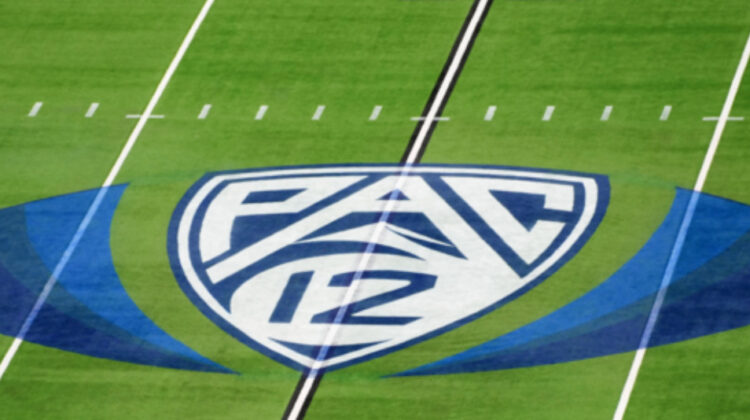The market rendered its verdict last week as Apple offered $25 million per school annually for the Pac-12’s media rights, with the potential for more if the conference met certain subscription goals.
But how much would a rebuilt conference be worth?
The mass exodus on Pitch-Black Friday left a quartet of schools and one gigantic question behind: Will Stanford and Cal link arms with Washington State and Oregon State to reform the Pac-12 through possible raids of the Mountain West and American conferences?
What revenue levels could a Pac-8 or Pac-10 command? That market doesn’t exist yet, so we created one.
The Hotline teamed with an expert in sports media valuation to estimate the market value of a rebuilt conference. (The expert asked to remain anonymous because of relationships in the industry.)
Because of the unusual nature of the project, which leaned into established audience data and media contracts but combined teams from three leagues, we made a slew of assumptions:
— The contract cycle was pegged to begin next fall, when the rebuilt Pac-12 would begin its next media deal, and span six years. An escalator of 3 percent annually was included.
— To determine the inventory for broadcast on linear networks, we averaged the current share for the Mountain West and American. The final estimate calls for 37 percent of football games and 49 percent of men’s basketball games on linear. The remaining games would be placed on a digital platform (ESPN+, Paramount, Apple TV, etc.). Typically, media companies pay more for linear broadcast rights.
— For inventory levels in football, we assumed an eight-game conference schedule and two non-conference home games, plus a championship matchup. In men’s basketball, we projected an 18-game conference season and five non-conference home games.
— We did not account for College Football Playoff or NCAA Tournament revenue. The figures below are strictly for broadcasts of regular-season games.
Scenario I
Expansion move: The four remaining schools merge with the Mountain West to create a super-conference. While an outright merger is considered unlikely, we wanted to provide a broad sweep of outcomes.
Total members: 16 in football, 15 in basketball (excluding Hawaii)
Estimated average valuation: $8.4 million per school
Scenario II
Expansion move: The four remaining schools add San Diego State, Fresno State and Colorado State from the Mountain West and SMU, Rice and Tulane from the American.
Total members: 10
Estimated average valuation: $10.5 million per school
Scenario III
Expansion move: The four remaining schools add San Diego State, Fresno State, Colorado State and Boise State from the Mountain West and SMU and Tulane from the American.
Total members: 10
Estimated average valuation: $10.9 million per school
There are other options, of course. The rebuilt league could settle on eight members, or grow to 12. It could add Memphis or even Gonzaga (except in football). Perhaps UNLV would be included. Our goal wasn’t to cover every possible scenario but, rather, to provide a reasonable range of outcomes.
How do those valuation levels compare to the current Mountain West and American contracts?
The American has a lengthy deal with ESPN — it lasts into the 2030s — that spins off an average of $7.5 million per year (approximately) to each campus. Any school jumping to the rebuilt Pac-12 would see an increase of about 50 percent annually under the highest valuation estimate.
The Mountain West’s contract with Fox and CBS, which expires in the summer of 2026, distributes an average of $4.75 million (approximately). Schools switching to the Pac-12 would more than double their media revenue under the highest valuation estimate.
Key point: Our methodology assumes equal revenue sharing, a financial structure that might not play out in reality.
Stanford, in particular, could command a greater share. The Cardinal possesses the greatest brand value and is considered the linchpin to the Pac-12 rebuild.
Any scenario in which new members agree to reduced revenue shares over the course of the contract would increase the amount headed to Stanford (and possibly other members of the quartet).
Additionally, we did not account for any cash that could be available to the ‘Pac-4’ once the eight departing schools leave for the Big Ten and Big 12 next summer. (The conference finished the 2022 fiscal year with about $43 million in net assets.)
What’s more, the eight outgoing schools will forfeit their March Madness revenue in 2025. That could add $3 million to the coffers of the four remaining members, according to Hotline estimates based on the number of NCAA units generated by the conference.
Once all the revenue streams are considered, including future postseason payouts and the forfeited NCAA Tournament cash, the ‘Pac-4’ could receive $20 million annually, on average, over the six-year contract term.
At that level, the campus distributions would significantly lag schools those in the Power Four but far exceed payouts typically received by members of the Group of Five.
*** Send suggestions, comments and tips (confidentiality guaranteed) to pac12hotline@bayareanewsgroup.com or call 408-920-5716
*** Follow me on Twitter: @WilnerHotline
*** Pac-12 Hotline is not endorsed or sponsored by the Pac-12 Conference, and the views expressed herein do not necessarily reflect the views of the Conference.
Related posts:

(AP Photo/Ralph Freso, File)
Hotline mailbag: An SEC feud, the Pac-12 villain vacancy, the FCG switch, schedule options and more
(AP Photo/Marcio Jose Sanchez)
Business of Sports – Updated Power Five revenue projections show Pac-12 deficit expanding as COVID hits, ACC Network grows and Big Ten, SEC rake in the cash
(Michael Malone/Bay Area News Group)
Wilner Hotline – Pac-12 to jump-start media rights negotiations after thunderbolt from Los Angeles VIDEO – Thursday July 7th Jon Wilner and Brad chop it up on Pac-12 future
VIDEO – Thursday July 7th Jon Wilner and Brad chop it up on Pac-12 future
